खोज परिणामों को समूहीकृत करने के लिए कैसे करना है प्रभावी सामग्री निर्माण के लिए
खोज परिणामों को समूहीकृत करना प्रभावी सामग्री बनाने में एक महत्वपूर्ण चरण है, क्योंकि यह प्रासंगिक विषयों और कीवर्ड की पहचान करने में मदद करता है जिनका उपयोग लक्षित दर्शकों को आकर्षित करने के लिए किया जा सकता है। इस लेख में, हम खोज परिणामों को समूहीकृत करने की प्रक्रिया का अन्वेषण करेंगे और यह कैसे सामग्री निर्माण में सुधार कर सकता है।
खोज परिणामों को समूहीकृत करने का परिचय
खोज परिणामों को समूहीकृत करने में समान कीवर्ड और विषयों को उनके खोज आयतन, प्रासंगिकता और अन्य कारकों के आधार पर समूहीकृत करना शामिल है। यह प्रक्रिया विभिन्न कीवर्ड और विषयों के बीच पैटर्न और संबंधों की पहचान करने में मदद करती है, जिससे सामग्री निर्माता अपने दर्शकों की आवश्यकताओं को पूरा करने वाली लक्षित सामग्री विकसित कर सकते हैं।
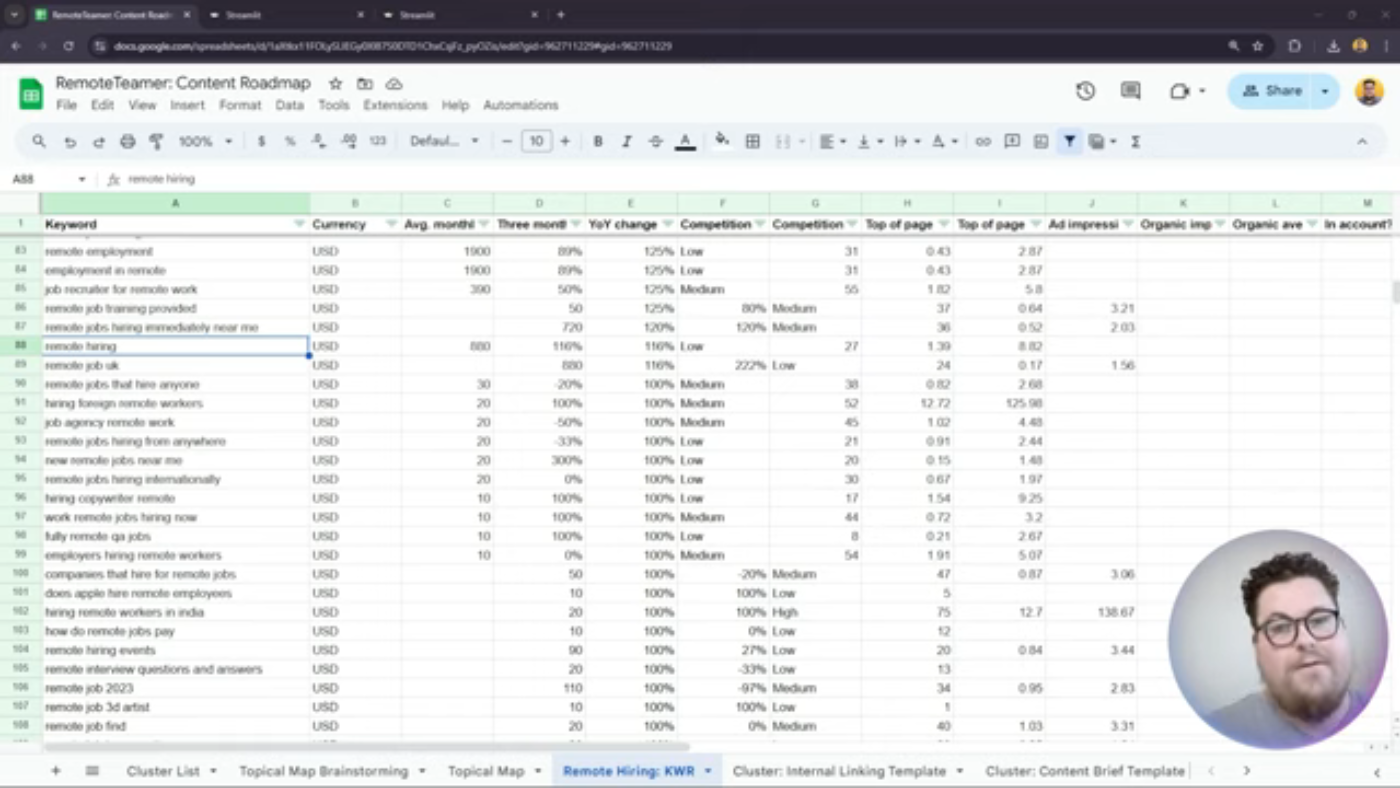 खोज परिणामों को समूहीकृत करने का परिचय
खोज परिणामों को समूहीकृत करने का परिचय
अपने डेटा को समूहीकृत करने के लिए सेट करना
खोज परिणामों को समूहीकृत करने की शुरुआत करने के लिए, आपको प्रासंगिक कीवर्ड और विषयों को इकट्ठा करके अपने डेटा को सेट करने की आवश्यकता है। यह विभिन्न उपकरणों और तकनीकों का उपयोग करके किया जा सकता है, जैसे कि कीवर्ड अनुसंधान और विषय मॉडलिंग।
 अपने डेटा को समूहीकृत करने के लिए सेट करना
अपने डेटा को समूहीकृत करने के लिए सेट करना
खोज परिणामों को समूहीकृत करने की प्रक्रिया चलाना
एक बार जब आप अपने डेटा को सेट कर लेते हैं, तो आप विशेषज्ञ सॉफ्टवेयर या एल्गोरिदम का उपयोग करके खोज परिणामों को समूहीकृत करने की प्रक्रिया चला सकते हैं। यह प्रक्रिया डेटा का विश्लेषण करके विभिन्न कीवर्ड और विषयों के बीच पैटर्न और संबंधों की पहचान करने में शामिल है।
 खोज परिणामों को समूहीकृत करने की प्रक्रिया चलाना
खोज परिणामों को समूहीकृत करने की प्रक्रिया चलाना
समूहीकृत कीवर्ड की समीक्षा और डाउनलोड करना
खोज परिणामों को समूहीकृत करने की प्रक्रिया चलाने के बाद, आप परिणामों की समीक्षा करके प्रासंगिक कीवर्ड और विषयों की पहचान कर सकते हैं। फिर आप समूहीकृत कीवर्ड डाउनलोड कर सकते हैं और उन्हें अपनी सामग्री निर्माण रणनीति को सूचित करने के लिए उपयोग कर सकते हैं।
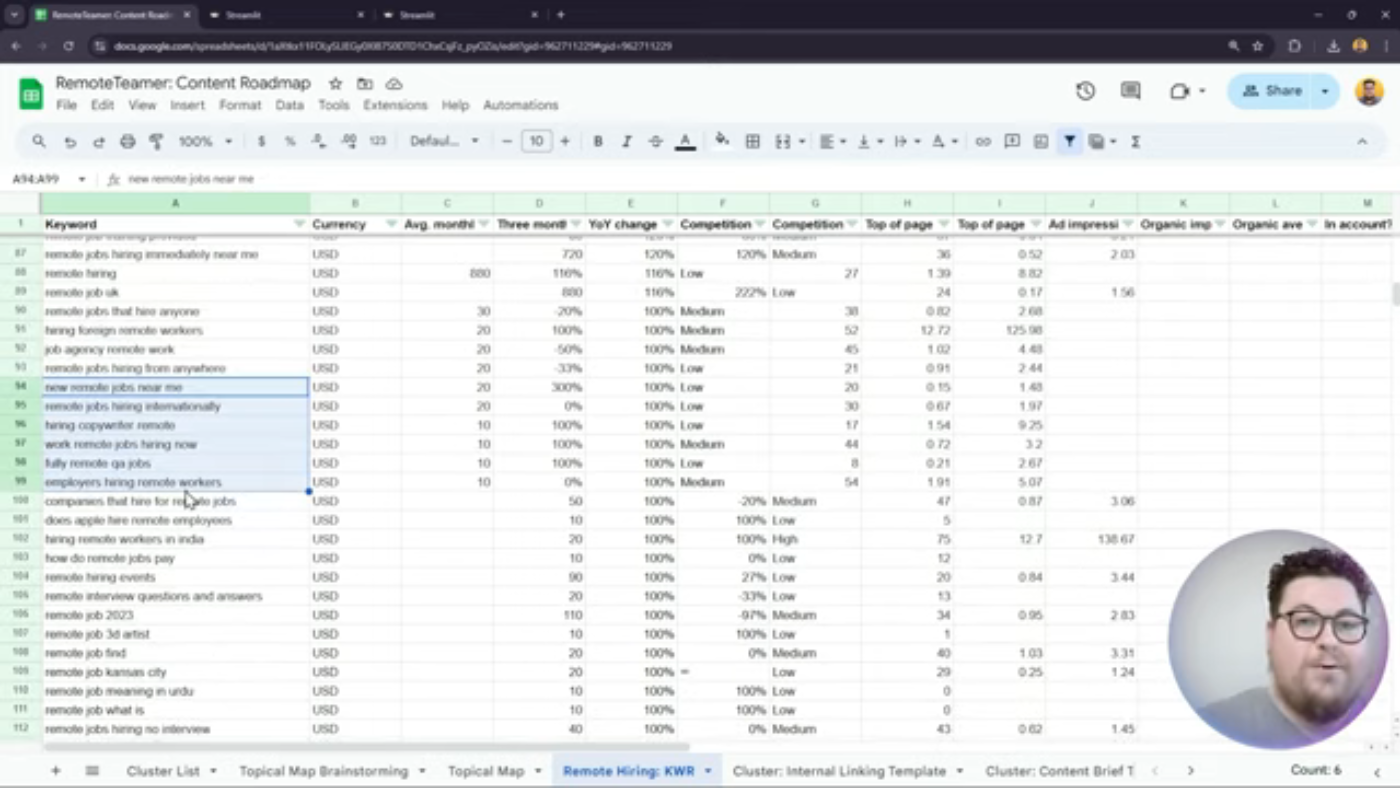 समूहीकृत कीवर्ड की समीक्षा और डाउनलोड करना
समूहीकृत कीवर्ड की समीक्षा और डाउनलोड करना
समूहीकृत डेटा को आयात करना और विश्लेषण करना
एक बार जब आप समूहीकृत कीवर्ड डाउनलोड कर लेते हैं, तो आप उन्हें एक स्प्रेडशीट या अन्य उपकरण में आयात कर सकते हैं और आगे विश्लेषण कर सकते हैं। इससे आप डेटा को अधिक विस्तार से देख सकते हैं और पैटर्न और संबंधों की पहचान कर सकते हैं जो आपकी सामग्री निर्माण रणनीति को सूचित कर सकते हैं।
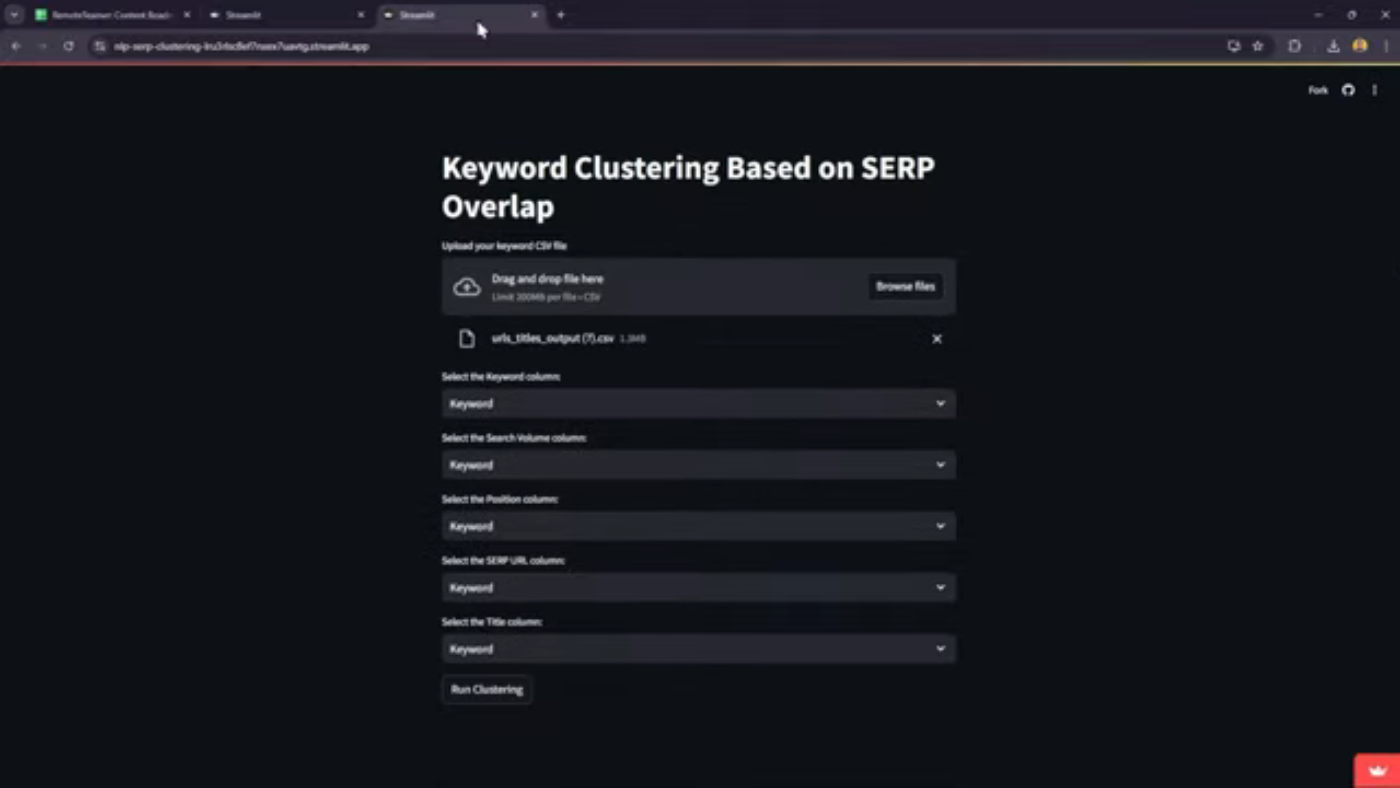 समूहीकृत डेटा को आयात करना और विश्लेषण करना
समूहीकृत डेटा को आयात करना और विश्लेषण करना
अपने डेटा को फ़िल्टर करना और स्टाइल करना
समूहीकृत डेटा आयात करने और विश्लेषण करने के बाद, आप इसे फ़िल्टर और स्टाइल कर सकते हैं ताकि इसे समझने और काम करने में आसान बनाया जा सके। इसमें डुप्लिकेट को हटाना, डेटा को प्रारूपित करना और महत्वपूर्ण जानकारी को उजागर करने के लिए कंडीशनल फ़ॉर्मेटिंग का उपयोग करना शामिल हो सकता है।
 अपने डेटा को फ़िल्टर करना और स्टाइल करना
अपने डेटा को फ़िल्टर करना और स्टाइल करना
पिवट टेबल बनाना और उनका उपयोग करना
पिवट टेबल समूहीकृत डेटा का विश्लेषण और सारांश करने के लिए एक शक्तिशाली उपकरण हो सकते हैं। पिवट टेबल बनाकर, आप आसानी से डेटा का सारांश और विश्लेषण कर सकते हैं और पैटर्न और संबंधों की पहचान कर सकते हैं जो आपकी सामग्री निर्माण रणनीति को सूचित कर सकते हैं।
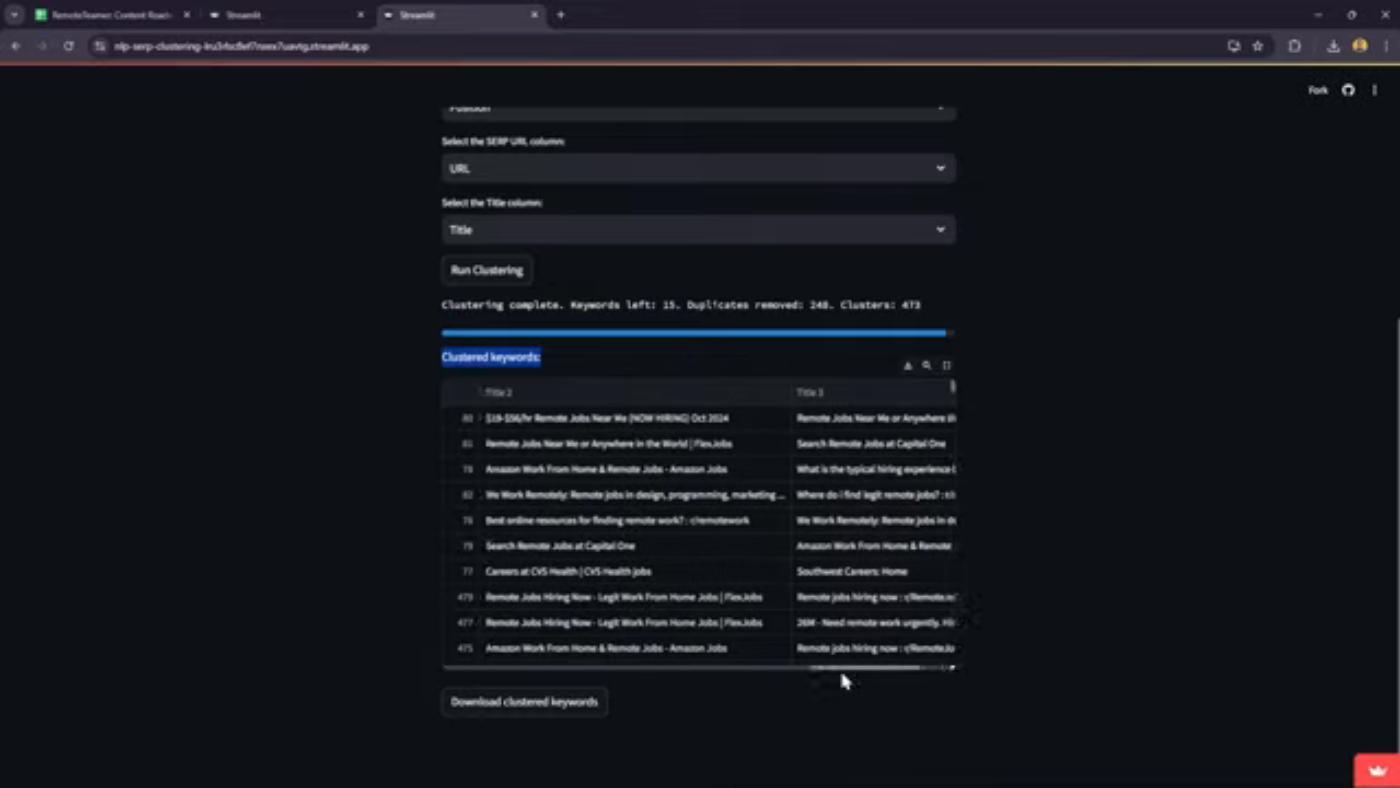 पिवट टेबल बनाना और उनका उपयोग करना
पिवट टेबल बनाना और उनका उपयोग करना
अपनी समूहीकृत कीवर्ड सूची को अंतिम रूप देना
समूहीकृत डेटा का विश्लेषण और सारांश करने के बाद, आप अपनी कीवर्ड और विषयों की सूची को अंतिम रूप दे सकते हैं। इसमें सबसे प्रासंगिक और महत्वपूर्ण कीवर्ड और विषयों का चयन करना और किसी भी डुप्लिकेट या अप्रासंगिक जानकारी को हटाना शामिल है।
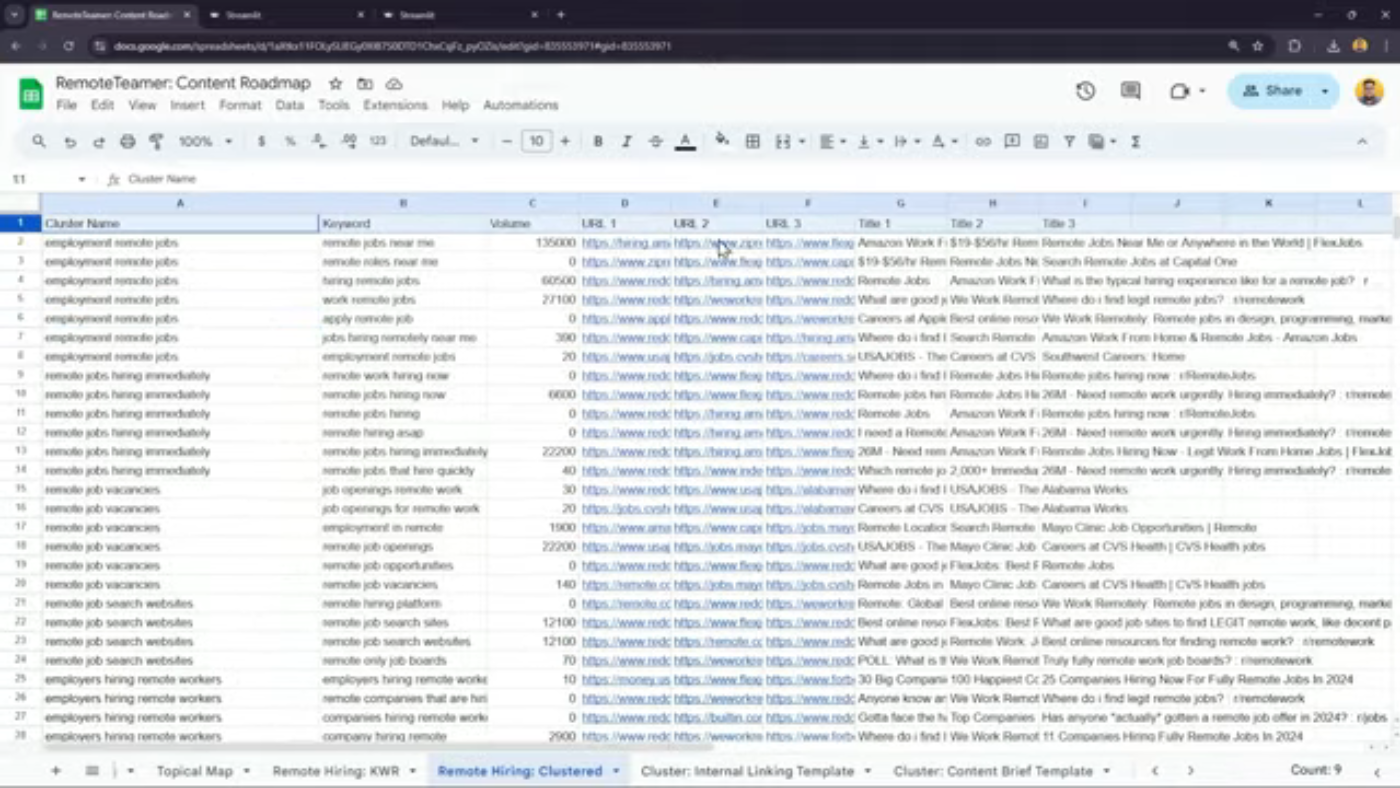 अपनी समूहीकृत कीवर्ड सूची को अंतिम रूप देना
अपनी समूहीकृत कीवर्ड सूची को अंतिम रूप देना
निष्कर्ष
खोज परिणामों को समूहीकृत करना प्रभावी सामग्री निर्माण के लिए एक शक्तिशाली तकनीक है। इस लेख में दिए गए चरणों का पालन करके, आप खोज परिणामों को समूहीकृत कर सकते हैं और प्राप्त अंतर्दृष्टि का उपयोग करके लक्षित और प्रभावी सामग्री बना सकते हैं जो आपके दर्शकों की आवश्यकताओं को पूरा करती है। अपनी समूहीकृत कीवर्ड सूची की समीक्षा और रिफाइन करना याद रखें ताकि यह सुनिश्चित हो सके कि यह प्रासंगिक और प्रभावी बनी हुई है।
